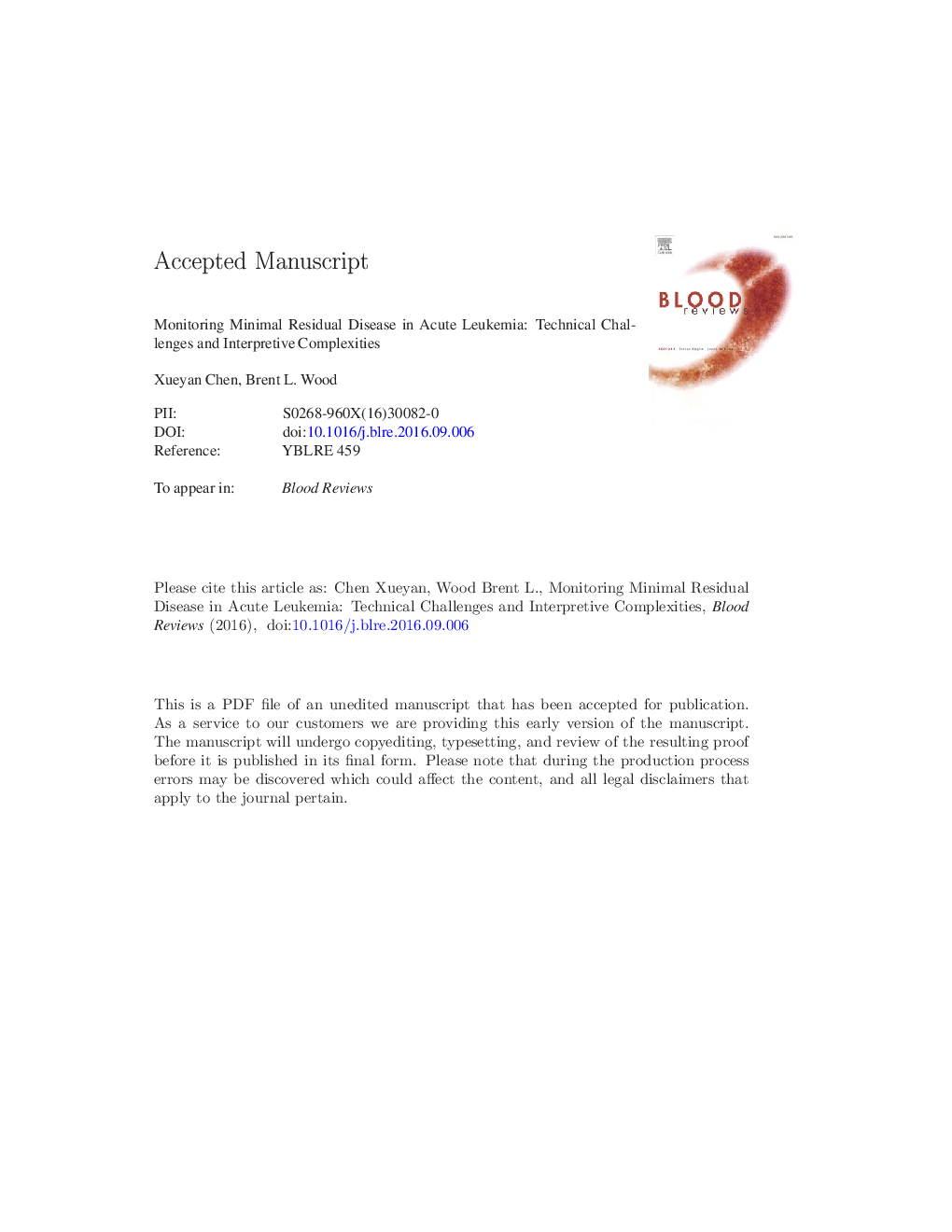| Article ID | Journal | Published Year | Pages | File Type |
|---|---|---|---|---|
| 5524684 | Blood Reviews | 2017 | 44 Pages |
Abstract
Minimal residual disease (MRD) after therapy has unequivocal prognostic value in acute leukemia. Over the past 20Â years, a number of techniques have evolved into routine laboratory tools to detect MRD, most notably, multiparametric flow cytometry (MFC) and quantitative polymerase chain reaction (PCR)-based molecular methods. There is growing evidence that the presence of MRD detected by MFC or molecular methods provides independent prognostic information and is associated with an increased risk of relapse and shortened survival. However, the predictive value of MRD may be affected by a lack of consensus as to the timing for assessment, the methodology used, and interlaboratory variation in test performance. Herein, we review the methodological principles of MRD assays, discuss the clinical implications of monitoring MRD for risk stratification and directing further therapy, and suggest potential areas for future investigation.
Related Topics
Life Sciences
Biochemistry, Genetics and Molecular Biology
Cancer Research
Authors
Xueyan Chen, Brent L. Wood,
